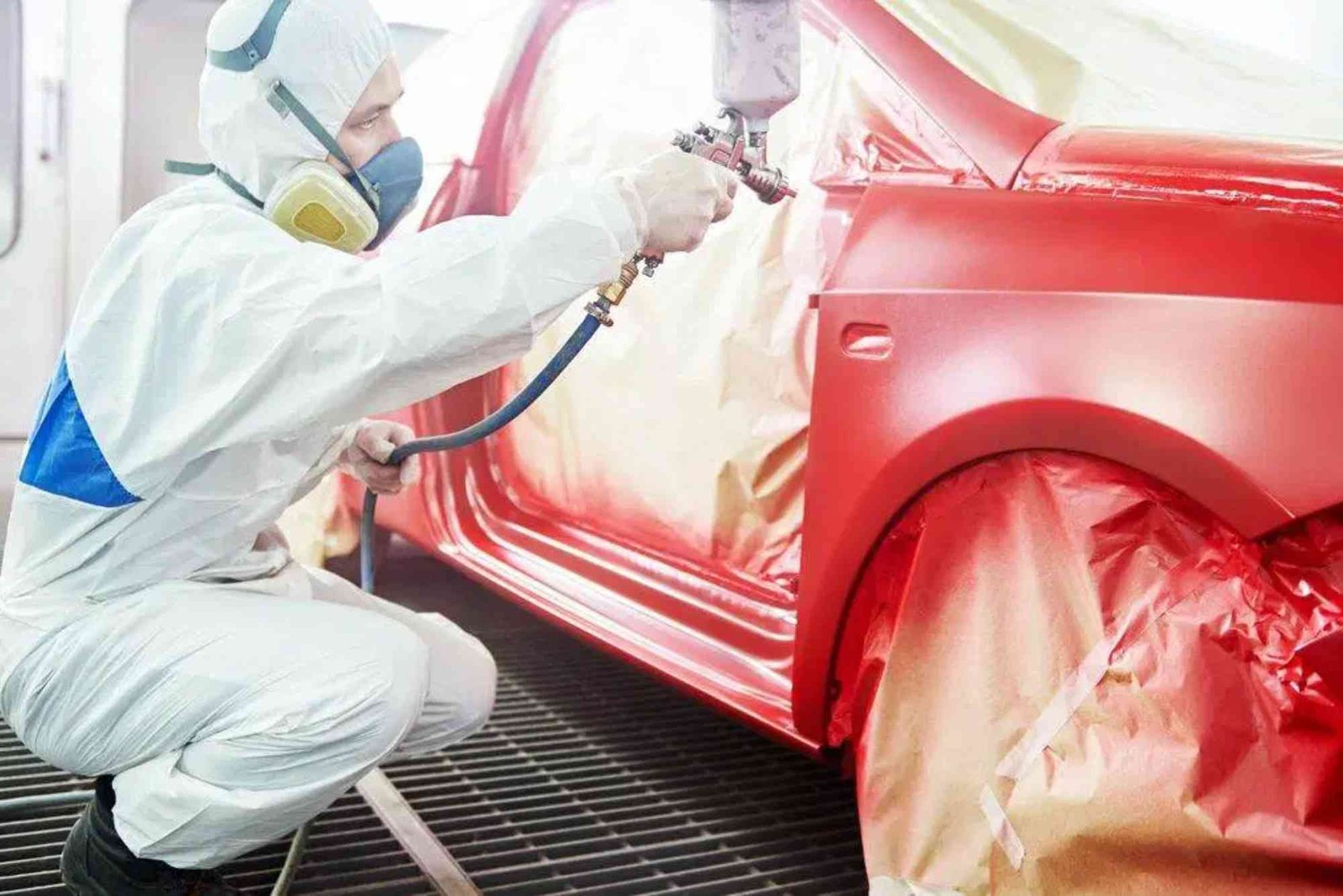Introduction
Every car owner experiences it at least once—a small dent from a parking lot mishap, a stray ball, or a minor collision. It’s frustrating to see your car’s smooth surface marred by a dent, but the good news is that you don’t always need a professional mechanic to fix it. This detailed guide will walk you through how to fix a dent in a car step by step, using easy, affordable, and effective methods that anyone can follow at home. Whether you’re dealing with a shallow ding or a deeper dent, you’ll find the right solution here to make your car look as good as new.
Understanding Car Dents and What Causes Them
Before jumping into repairs, it’s essential to understand the type of dent you’re dealing with. Not all dents are created equal, and knowing their type helps you choose the most effective repair technique.
Minor dents often occur from low-impact accidents, such as bumping into another car door or hitting a pole while reversing. These can usually be fixed at home using simple tools and techniques. Larger or deeper dents, especially those with paint damage, may require professional help or specialized equipment.
The size, location, and depth of the dent all influence which method you should use. For instance, dents on flat metal panels are easier to repair than those on curved or reinforced areas.
Assess the Dent
The first step in how to fix a dent in a car step by step is to assess the damage carefully. Clean the affected area with soap and water to remove dirt and debris. Once it’s clean, inspect the dent under good lighting. Check if the paint is chipped, cracked, or scratched.
If the paint is intact, you can proceed with DIY methods safely. But if you notice cracks or peeling paint, it’s better to plan for repainting after the dent is fixed. This step prevents rust and maintains your car’s finish.
Gather the Tools and Materials
Depending on the method you choose, you’ll need a few basic tools. Common items include:
-
A hair dryer or heat gun
-
Compressed air or dry ice
-
A plunger or suction dent puller
-
Aluminum foil
-
Boiling water (for plastic bumpers)
-
Gloves and microfiber cloths
You don’t need expensive tools—most household items work perfectly for small dents.
Try the Boiling Water Method (Best for Plastic Bumpers)
This is one of the easiest and most popular techniques when learning how to fix a dent in a car step by step. It’s particularly useful for cars with plastic bumpers or panels.
Boil a pot of water and carefully pour it over the dented area. The heat softens the plastic, making it more flexible. Once heated, reach behind the bumper (if possible) and gently push the dent outward. If you can’t reach the back, use a plunger to pull it out while the area is still warm.
Immediately pour cold water over the area to help the plastic retain its shape. This simple trick often works wonders for minor dents caused by parking mishaps.
Use a Hair Dryer and Compressed Air
Another effective method involves temperature changes. Heat the dent with a hair dryer or heat gun for about 30 seconds. Keep the nozzle a few inches away to avoid paint damage. Once the area is hot, quickly spray it with compressed air.
The rapid cooling causes the metal to contract, popping the dent out. It’s a safe and easy way to fix small to medium dents without removing panels or using heavy tools.
The Plunger Method for Larger Dents
Believe it or not, a common household plunger can work well for repairing dents. Use a clean plunger and slightly moisten its rim for better suction. Place it over the dent and push and pull with steady pressure.
This technique works best on flat surfaces and shallow dents. If done correctly, the suction helps pull the metal back into shape. It might take a few tries, but patience pays off.
Try the Aluminum Foil and Dry Ice Method
For this technique, you’ll need a piece of aluminum foil and a few chunks of dry ice. First, heat the dented area with a hair dryer for about a minute. Then cover the area with the foil and gently rub the dry ice over it.
The sudden temperature difference causes the metal to contract, often popping the dent back into place. Always wear gloves when handling dry ice, as direct contact can cause burns.
Use a Professional Dent Repair Kit
If home remedies don’t fully fix the dent, consider using a dent repair kit. These kits are available online or at auto parts stores and include suction cups, glue tabs, and pulling tools designed for various dent sizes.
Follow the instructions carefully—attach the glue tab to the dent, connect the pulling tool, and slowly pull the dent out. Once it’s done, use rubbing alcohol to remove glue residue.
These kits can handle most small to medium dents effectively, giving a near-professional result without visiting a body shop.
Finish and Polish the Surface
Once the dent is fixed, it’s time to make your car look flawless again. Clean the repaired area and inspect it closely. If the paint has minor scratches, use a polishing compound to buff them out.
A good car wax or ceramic coating can help protect the surface and enhance the shine. Regular polishing also prevents oxidation and keeps the car’s exterior smooth and glossy.
When to Seek Professional Help
While DIY methods work great for small dents, some situations call for professional expertise. If your car has deep dents, damaged paint, or dents near edges and creases, a body shop can restore it safely without further damage.
Professionals use specialized tools like paintless dent repair (PDR) equipment, which allows them to fix dents without repainting. It’s quick, affordable, and preserves your car’s original paint.
If you’re unsure about fixing it yourself, consult a trusted mechanic or auto body repair service for advice.
Additional Maintenance Tips
To avoid future dents, always park carefully, especially in crowded lots. Use car covers or park away from shopping carts and tight spaces. Regular waxing also adds a protective layer, reducing damage from minor impacts.
For more insights on car maintenance, check out How To Fix Tips for expert advice and proven repair techniques.
If you’re looking for a complete step-by-step repair manual, read How To Fix A Guide to master more detailed approaches for car restoration and upkeep.
You can also explore the Related article on buddycleaning.com for comprehensive automotive care and car detailing information.
Common Mistakes to Avoid When Fixing Car Dents
Even though these DIY techniques are simple, some mistakes can make the situation worse. Avoid these errors to ensure the best results:
-
Using too much heat for too long, which can damage paint
-
Pulling too hard with a plunger or suction tool
-
Ignoring paint cracks before repair
-
Skipping the finishing step after removing the dent
By working slowly and carefully, you can restore your car’s appearance safely.
(FAQs)
Can I fix a dent myself at home?
Yes, many small dents can be fixed at home using tools like plungers, hot water, or a hair dryer. Just ensure the paint isn’t damaged before starting.
How long does it take to fix a car dent?
Most minor dents can be fixed in less than an hour using basic methods. However, deeper or more complex dents may take longer or need professional repair.
Does hot water really remove car dents?
Yes, for plastic bumpers or panels, hot water softens the material, allowing you to push the dent out gently. It’s a safe and effective DIY trick.
Is paintless dent repair better than DIY?
Paintless dent repair (PDR) is the most professional and safe method, especially for expensive vehicles. It maintains the car’s original paint and gives flawless results.
How much does professional dent repair cost?
It depends on the size and location of the dent. Small dents may cost $50–$150, while larger ones can reach $500 or more if repainting is needed.
What if my car’s paint cracked after removing the dent?
If you notice cracks or chips, apply touch-up paint or take the car to a body shop to prevent rust and maintain appearance.
Learning how to fix a dent in a car step by step saves you money, time, and stress. From the boiling water trick to using professional dent kits, there are multiple ways to restore your car’s appearance. The key is patience and careful application of the right method.
By following these techniques, you’ll be surprised how easy it is to bring back your vehicle’s sleek, dent-free look without expensive repairs. And if the dent seems too stubborn or complex, don’t hesitate to consult a professional to ensure lasting results.












